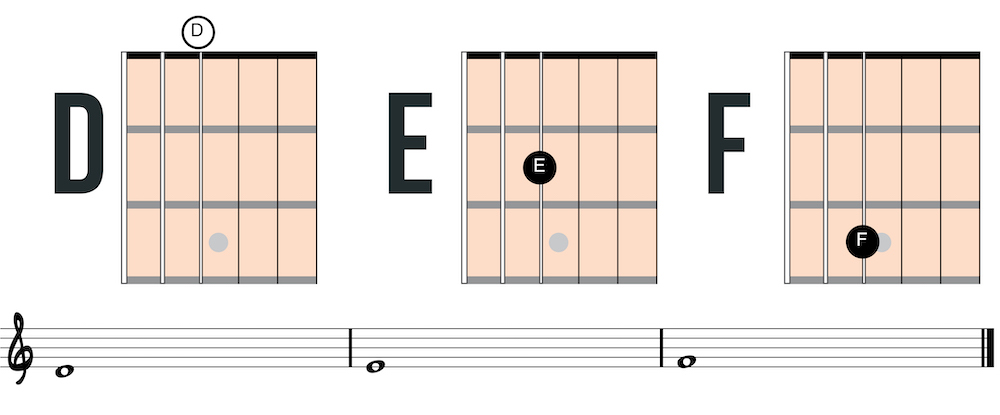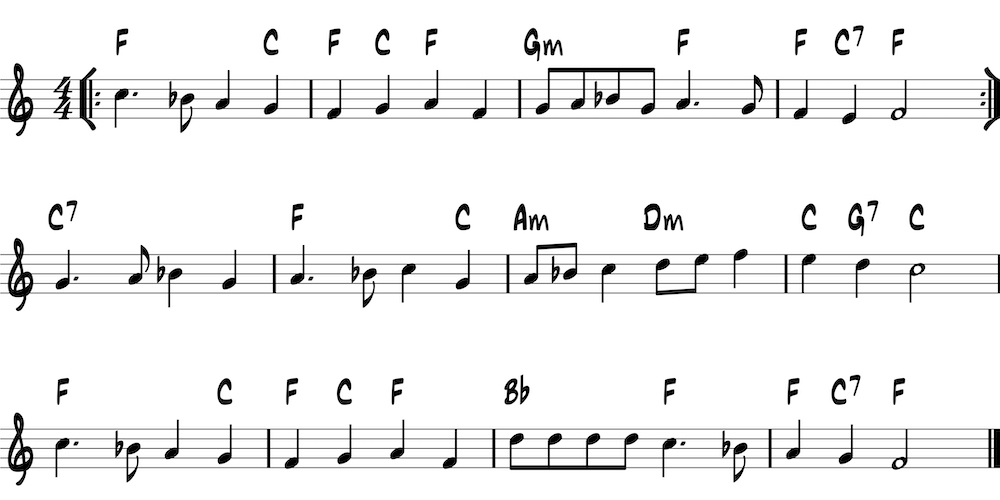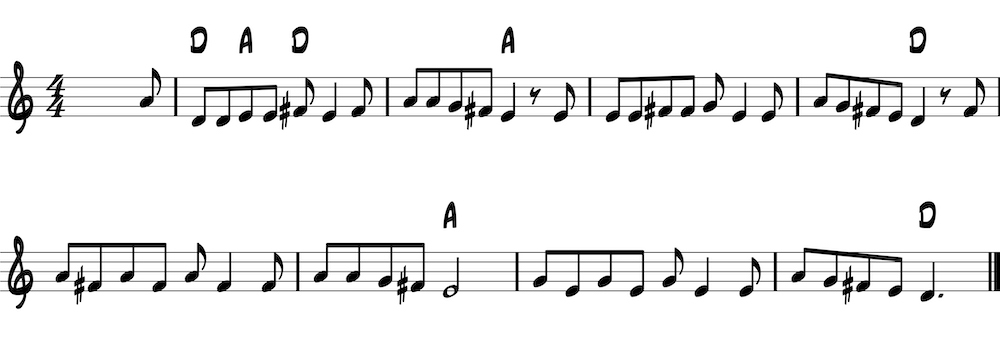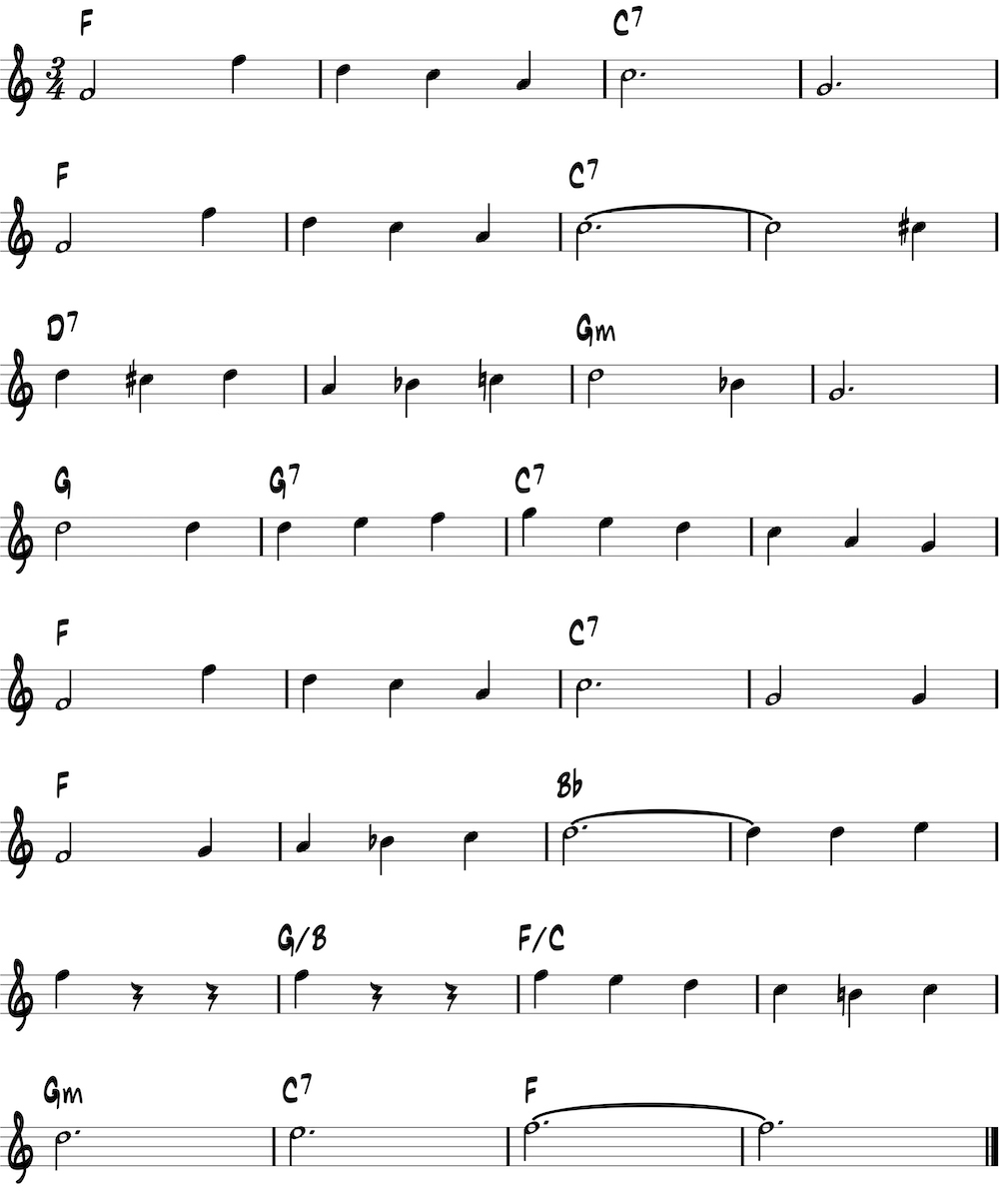Fourth string: open position
Play E on the second fret with the second finger and F on the third fret with the third finger.




Frere Jacques

Flats and repeats

The next example uses two new devices: the flat accidental and the repeat sign. The flat sign resembles a lowercase b and is placed before a note on the staff. To flat a note, drop the note by one half-step (one fret). In this case we will play B-flat at the third-string third-fret (one fret lower than the B tuning note at the fourth-string fourth-fret).
A repeat sign is a double bar line with two dots on either the left or the right. If the dots are on the right, it is a forward-facing repeat, and if they are on the left, it is a backward-facing repeat. Repeat signs sometimes have brackets which, for our purposes, make it more clear which section is to be repeated. To play a repeat, simply repeat the music between the two repeat signs.
Deck the Halls

Sharps & pickup measures
A sharp looks like a number sign or hashtag. Think of a sharp as the opposite of a flat. To play a sharp, raise the note one half-step (one fret). In this example, play F# at the fourth-string fourth-fret (one fret higher than F). A pickup measure is an incomplete measure that comes at the beginning of a song. It may be helpful to count backwards to find which beat to start on. “The Dreidel Song” begins on the and-of-four and “O Christmas Tree” begins on beat three.
The Dreidal Song

O Christmas Tree

Take Me Out to the Ballgame

Back: Third string Next: Fifth string